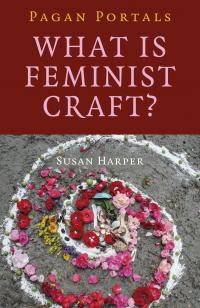
We were heading towards home after our visit to Brean Down, but via a bed and breakfast stopover at a country pub nestled somewhere in the wilds of Wiltshire. Which, as it turned out, is situated a mere four miles or so from Avebury. This meant, obviously, that a visit to the Avebury stone circle en route was almost an obligation.
We arrived there quite early on the Sunday morning. The Avebury site is jointly the responsibility of English Heritage and the National Trust, although it's the latter who appear to be in charge of actual day-to-day management, something emphasised by the prominence of National Trust signposts along the road. On pulling into the car park, we learned this has consequences - not least of which is a £7 parking charge. Considering that we only had about an hour and a half to spare at Avebury, this seemed a bit too steep!
The other big change is the sheer number of visitors. Avebury, on that Sunday morning at least, was overrun with tourists who were arriving, even as we watched, by coachload after coachload. Every standing stone appeared to have someone beside it taking a selfie. Even a meal at the Red Lion pub was out of the question, with every table apparently booked up well in advance.
Feeling overwhelmed, not to mention disappointed, we decided not to stay; turning the car around, we left quickly.
What this failed visit has emphasised for me is that there is a significant paradox that comes with the involvement of bodies such as the National Trust and English Heritage in sites sacred to Pagans.
On the one hand, such stewardship, bringing as it does a kind of state-sanctioned protection for a site and some access to funding (however limited), is genuine protection for sites that might otherwise be more vulnerable to vandalism, neglect and decay. This is no small thing. I have clear memories of one of our local sites - Little Kits Coty House, also called the Countless Stones - before that was taken under the wing of English Heritage, the sarsens painted with graffiti and bearing the marks of fires that had been lit among or even upon them.
On the other hand, however, and certainly in the case of the big famous locations such as Avebury and Stonehenge, the priorities of management inevitably become tied to increasing footfall and raising money. Hence hefty parking charges, maybe admission charges too, and a predominance of visitors who, while they may still speak in hushed tones and act respectfully in a cathedral, are unlikely to feel any such compunction within a circle of standing stones.
One way of solving the resulting dilemma, at least in the case of smaller sites, may be possible. Some years ago, a scheme was introduced whereby volunteer groups were enabled to enter into partnership with English Heritage in managing and maintaining local sites of interest. In fact a small group of pagans in Kent did come together with the express purpose of entering into such a partnership at Little Kits Coty House, and discussions were at a fairly advanced stage when, due to circumstances beyond our control etc, things fell through. I'm not sure if that scheme is still in place, but it might be a worthwhile line of enquiry for Pagan groups based close to particular sacred sites.
A further thought that has occurred to me might be quite controversial. Because it seems to me that while the ancient sacred sites remain important to modern Pagans for the connection they give us with our ancestors, and as "acupuncture points" in the sacred landscape, the time has come that we could be thinking in terms of creating new sites of our own - sites that help us to resacralise the landscape, and temples that function as centres of worship, healing and teaching for practitioners who are, after all, mostly urban dwellers nowadays.
That is what I think Dion Fortune intended as an aspect of her ramshackle temple at Chalice Orchard, in Glastonbury, almost a century ago. I think it's how she envisaged an aspect of the fictional temple built for Lilith Morgan Le Fay, at the seaward tip of Brean Down. And it's a relevant part of her legacy that modern Pagans can take up and seek to materialise, and that has potential to lead some real, significant cultural changes in our increasingly polarised and dangerous world.
Categories:
0 comments on this article






